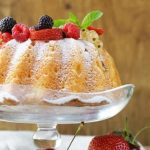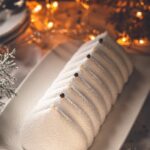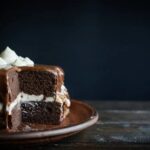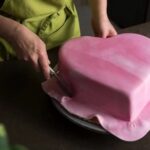Are you looking to elevate your baking skills and create beautiful cakes at home? In this article, we will explore the art of cake decorating with icing sugar. Discover how to decorate cake at home with icing sugar, using simple techniques and tools that will leave you with professional-looking results.
Decorating a cake with icing sugar is a fun and creative way to add flair to any homemade dessert. With just a few basic tools and ingredients, you can transform a plain cake into a stunning masterpiece. By following our step-by-step guide, you’ll learn how to achieve the perfect consistency for your icing sugar and various techniques for applying it onto your cakes.
Whether you’re a beginner or an experienced baker, mastering the art of cake decorating with icing sugar can take your creations to the next level. From creating intricate designs to incorporating colors and flavors, there are endless possibilities when it comes to decorating cakes at home. Join us as we delve into the world of cake decoration and uncover the secrets to turning an ordinary cake into a work of art.
Basic Tools and Ingredients Needed for Cake Decorating With Icing Sugar
Decorating cakes with icing sugar can be a fun and creative way to add a personalized touch to your baked treats. Before diving into the process, it’s important to have the right tools and ingredients on hand. Some basic tools you will need include a cake turntable, offset spatula, icing smoother, piping bags, piping tips, and a bench scraper. These tools will help you achieve smooth and precise decorations on your cake.
In addition to tools, having the right ingredients is essential for successful cake decorating with icing sugar. The main ingredient you will need is of course icing sugar, also known as powdered sugar. This will serve as the base for your decorative elements. Other key ingredients include butter or shortening for buttercream frosting, vanilla extract or other flavorings, and food coloring gels for adding vibrant colors to your designs.
When it comes to preparing the icing sugar for decorating your cake, achieving the right consistency is crucial. The consistency of your icing will determine how well it spreads on the cake and holds its shape when piped. To achieve a smooth and spreadable consistency, mix the icing sugar with a small amount of liquid such as milk or water until you reach the desired texture.
If you prefer a thicker consistency for piping decorations, simply add more powdered sugar until you reach the desired stiffness. With these basic tools and ingredients in hand, you are ready to start creating beautiful designs on your cake.
Mixing and Preparing the Right Consistency of Icing Sugar
When it comes to decorating a cake at home with icing sugar, achieving the perfect consistency is essential for creating beautiful designs. To ensure your icing sugar is the right texture for decorating, you’ll need to follow these steps:
1. Sift the icing sugar: Before mixing the icing sugar with any other ingredients, it’s important to sift it first. This will help remove any lumps and make the sugar easier to incorporate into the mixture.
2. Gradually add liquid: Whether you’re using water, milk, or another liquid, adding it gradually to the icing sugar is key. This allows you to control the consistency and prevent the mixture from becoming too thin.
3. Mix thoroughly: Use a hand mixer or stand mixer to blend the icing sugar and liquid together until smooth and creamy. Make sure there are no lumps in the mixture for a professional-looking finish on your cake.
By following these steps, you can ensure that your icing sugar is at the right consistency for decorating your cake with precision and ease.
Remember to practice patience as getting the right consistency may take some trial and error – but once you have mastered it, you’ll be able to create stunning designs on your homemade cakes.
Different Techniques for Applying Icing Sugar on Cakes
Decorating cakes with icing sugar can be a fun and creative way to add a special touch to any baked treat. There are several different techniques that you can use to apply icing sugar onto your cake, each producing unique and beautiful results.
One common method is known as the “smooth finish,” where you use a spatula or offset spatula to spread the icing sugar evenly over the top and sides of the cake. This technique works best with a slightly thick consistency of icing sugar to ensure a smooth and flawless finish.
Another popular technique for applying icing sugar is called “piping,” which involves using a piping bag and various tips to create intricate designs and decorations on your cake. You can use different tips to achieve different effects, such as creating rosettes, shells, dots, or even writing messages on your cake. Piping allows for endless creativity and customization, making it perfect for special occasions like birthdays, weddings, or holidays.
If you’re looking for a more rustic or textured look, consider trying the “spatula swirl” technique. Simply apply dollops of icing sugar onto the cake with a spoon or spatula, then use the back of the spoon or spatula to create swirling patterns for a whimsical finish.
This technique is great for adding a homemade charm to your cake while still looking stylish and sophisticated. No matter which technique you choose, decorating cakes with icing sugar is a delightful way to showcase your baking skills and impress your friends and family.
Tips and Tricks for Creating Intricate Designs With Icing Sugar
Decorating cakes with icing sugar can be a fun and creative process that allows you to showcase your artistic skills. Whether you’re a beginner or experienced baker, there are several tips and tricks you can use to create intricate designs with icing sugar. From simple swirls to intricate patterns, here are some tips to help you take your cake decorating game to the next level.
Use Different Piping Tips for Variety
One of the best ways to create intricate designs with icing sugar is by using different piping tips. Piping tips come in various shapes and sizes, allowing you to create different textures and patterns on your cake. For example, a star-shaped tip can create a beautiful rosette design, while a round tip is perfect for writing messages or creating borders. Experiment with different tips to see which ones work best for the design you want to achieve.
Practice Makes Perfect
Creating intricate designs with icing sugar takes practice, so don’t be discouraged if your first few attempts don’t turn out perfectly. The more you practice, the better you’ll become at piping intricate designs onto your cakes.
Start by practicing on a piece of parchment paper before moving on to decorating your actual cake. This will help you get a feel for how the icing flows from the piping bag and allow you to perfect your technique before applying it to the cake.
Add Dimension With Layers
To add depth and dimension to your designs, consider layering different colors or shades of icing sugar on top of each other. For example, you could pipe a base layer of white icing sugar onto your cake and then add smaller details in a contrasting color on top. This will create a visually appealing contrast that makes your designs stand out. Experiment with layering different colors and textures to see what works best for the design you have in mind.
By following these tips and tricks, you’ll be able to create stunning and intricate designs with icing sugar that will impress your family and friends. Remember that practice is key when it comes to cake decorating, so don’t be afraid to experiment and try new techniques until you find what works best for you. With patience and creativity, you’ll soon be able to decorate cakes like a pro at home using icing sugar.
How to Use Piping Bags and Tips for Precise Decorations
Using piping bags and tips is essential for achieving precise and professional-looking decorations when decorating cakes with icing sugar. These tools allow you to control the flow of icing and create intricate designs with ease. Here’s a guide on how to use piping bags and tips effectively to elevate your cake decorating skills at home.
To start, you will need a piping bag, coupler, and different types of piping tips such as round tips, star tips, leaf tips, and petal tips. The coupler helps secure the tip in place and allows you to easily switch between different tips without changing the bag.
Make sure to choose the right tip based on the design you want to create – round tips are great for writing or creating outlines, star tips for creating borders or stars, while leaf and petal tips are perfect for making floral designs.
When filling the piping bag with icing sugar, gently push the icing down towards the tip but be careful not to overfill it. Twist the top of the bag to seal it shut and apply pressure from the top with your dominant hand while guiding and controlling the direction of icing flow with your non-dominant hand. Practice on a separate surface before decorating your cake to get comfortable with different pressure levels needed for various designs.
Experimenting with different techniques like piping dots, lines, rosettes, shells, or ruffles using varied pressure and speed will help you understand how to achieve different textures and shapes on cakes. Remember that practice makes perfect when it comes to cake decorating – so don’t be afraid to make mistakes along the way. With patience and creativity, you can master using piping bags and tips for precise decorations that will impress everyone at your next gathering.
| Piping Bag Tips | Details |
|---|---|
| Choosing appropriate piping tip | Select round/stars/leaf/petal based on design |
| Filling & handling piping bag | Gently fill icing & practice control before actual decoration |
| Techniques & practice | Try dot/ line/rosette/shell/ruffle textures with varied pressure & speed |
By following these steps and honing your skills in using piping bags and tips for precise decorations, you’ll be able to create beautifully decorated cakes that look as though they were done by a professional baker. Don’t hesitate to experiment with different designs and colors to showcase your unique style in cake decorating using icing sugar.
With dedication and practice, you’ll soon be able to impress friends and family with your stunning cake creations right from your own kitchen.
Incorporating Colors and Flavors Into Icing Sugar for a Unique Touch
When it comes to decorating cakes with icing sugar, adding colors and flavors can take your creations to the next level. One simple way to incorporate colors into icing sugar is by using gel food coloring. These concentrated colors are perfect for achieving vibrant shades without altering the consistency of the icing. Start by adding a small amount of gel food coloring to your icing sugar and mix well until you reach your desired color intensity.
Flavors can also play a significant role in enhancing the overall taste of your cake. To infuse flavor into your icing sugar, consider using extracts such as vanilla, almond, lemon, or even coconut. Add a few drops of the extract to your icing sugar mixture and blend thoroughly to ensure an even distribution of flavor. Experimenting with different combinations of colors and flavors can result in unique and delicious cakes that will surely impress your guests.
Another fun way to add visual appeal and flavor to your cakes is by incorporating sprinkles, edible glitter, or even cocoa powder into the icing sugar mixture. These elements not only provide additional texture but also offer a dash of whimsy to your designs. Remember that when working with flavors and colors in icing sugar, it’s essential to taste test along the way to ensure that you achieve the perfect balance between aesthetics and taste.
| Aspects | Tips |
|---|---|
| Gel Food Coloring | Concentrated colors for vibrant shades without affecting consistency. |
| Extracts | Add vanilla, almond, or other extracts for enhanced flavor. |
| Additional Elements | Incorporate sprinkles or edible glitter for texture and visual appeal. |
Troubleshooting Common Issues When Decorating Cakes With Icing Sugar
Decorating cakes with icing sugar can be a fun and creative process, but sometimes things don’t go as planned. Here are some common issues that may arise while decorating your cake at home and how to troubleshoot them:
1. Crumbly or Dry Icing: If your icing sugar is too dry or crumbly, it may not spread easily on the cake surface. To remedy this issue, try adding a few drops of milk or water to the icing sugar until you reach a smooth and spreadable consistency.
2. Icing Sugar Melting or Sliding Off: In warmer temperatures, you may find that your icing sugar starts melting or sliding off the cake. To prevent this, make sure to keep your cake in a cool place before and after decorating. You can also try adding a stabilizer like cornstarch to your icing mixture for better hold.
3. Air Bubbles in Icing: Sometimes air bubbles can get trapped in your icing sugar, causing an uneven surface when decorating. To eliminate air bubbles, gently tap the filled piping bag on the counter before decorating. You can also run a toothpick through the icing to release any trapped air.
By addressing these common issues, you can ensure that your cake decorating with icing sugar turns out beautifully and as intended. Remember to have patience and practice different techniques to master the art of cake decoration at home using icing sugar.
Conclusion
In conclusion, decorating a cake at home with icing sugar can be a fun and rewarding experience. By following the tips and techniques outlined in this article, you can create beautifully decorated cakes that will impress your family and friends. With the right tools, ingredients, and knowledge of how to achieve the perfect consistency for your icing sugar, you can showcase your creativity and skill in cake decorating.
One key aspect of creating stunning cake decorations with icing sugar is mastering different techniques for applying the sugar onto the cake. Whether you choose to use a piping bag and tips for precise details or opt for a more freehand approach, practicing these techniques will help you develop your own unique style. Additionally, incorporating colors and flavors into your icing sugar can add an extra layer of creativity to your designs, allowing you to personalize your cakes even further.
When faced with common issues while decorating cakes with icing sugar, don’t be discouraged. Troubleshooting problems such as air bubbles or inconsistent icing consistency is part of the learning process. By staying patient and persistent, you can overcome these challenges and continue to improve your cake decorating skills. So go ahead, experiment with different designs, colors, and flavors, and let your creativity shine as you decorate beautiful cakes at home with icing sugar.
Frequently Asked Questions
How Do I Use Icing Sugar to Decorate a Cake?
Using icing sugar to decorate a cake is a simple yet effective way to add a touch of sweetness and elegance to your creation. One common method is using stencils to create decorative patterns on the cake’s surface by dusting the icing sugar over them.
Alternatively, you can also sprinkle the icing sugar through a fine mesh sieve for a more subtle and uniform coating.
How Do You Coat a Cake With Icing Sugar?
To coat a cake with icing sugar, start by ensuring that your cake has completely cooled down before applying the sugar. Place the cake on a serving plate or cake stand, then use a fine sieve or shaker to dust the icing sugar evenly over the top of the cake.
Gently tap the sides of the sieve as you go to distribute the sugar uniformly.
How Do You Decorate a Cake With Powdered Sugar?
Decorating a cake with powdered sugar can be done in various creative ways. For instance, you can use cookie cutters as stencils to create interesting shapes on top of your cake by sprinkling powdered sugar over them and carefully lifting them off.
Another option is to use paper doilies as stencils for intricate patterns that can make your cake look more visually appealing and festive.

Welcome to my blog about home and family. This blog is a place where I will share my thoughts, ideas, and experiences related to these important topics. I am a stay-at-home mom with two young children. I hope you enjoy reading it! and may find some helpful tips and ideas that will make your home and family life even better!





